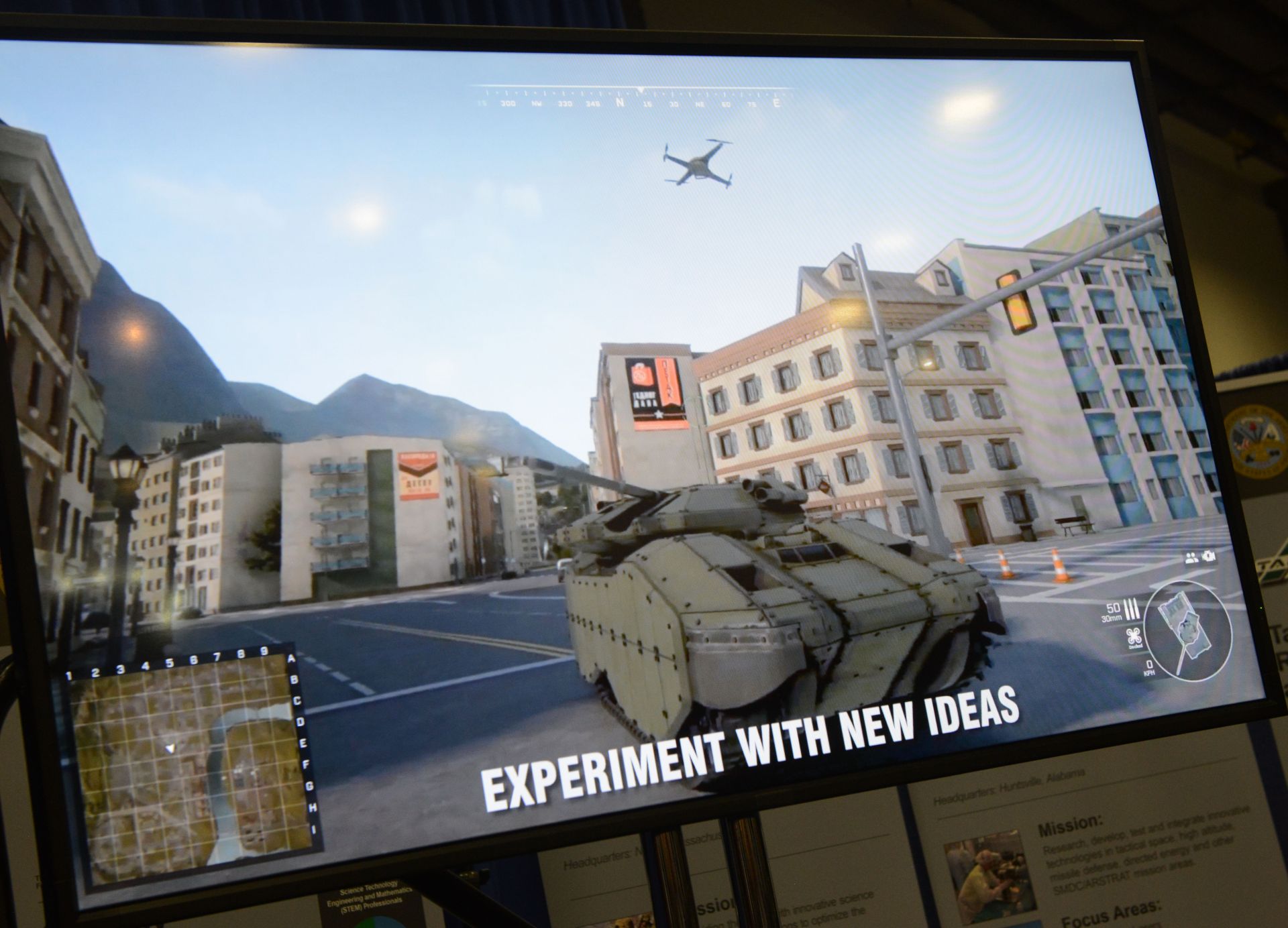About 500 Soldiers are beginning this week to beta-test a number of computer-generated vehicle platforms and weapons systems in a variety of simulated environments, said Maj. Gen. Robert M. Dyess.
About 500 more Soldiers will soon be added to the testing, which is basically a computer-generated war game, he said, noting that slots are still open for anyone interested.
The gaming simulation, known as Early Synthetic Prototyping, or ESP, is a way for the Army to user-test existing, experimental and conceptual weapons, vehicles and various technologies in a number of environmental settings, he said.
Dyess, acting director of the Army Capabilities Integration Center, or ARCIC, spoke Oct. 9 at the Association of the U.S. Army’s Annual Meeting and Exposition.
The idea for ESP came about with the realization that Army laboratories across the nation were developing experimental weapons and vehicles without any suitable way to test these in an interactive manner, he said.
“Each lab has ways to simulate and model weapons systems, but not a place to put them all together,” he explained. “So ESP is sort of like a sandbox where we can put a weapon system developed by, say Picatinny [Arsenal] on a vehicle system developed by TARDEC [Tank Automotive Research, Development and Engineering Center] with some communications gear developed by CERDEC [Communications-Electronics Research, Development and Engineering Center] with some night vision capabilities.”
The second realization was that a lot of Soldiers spend a lot of their free time playing computer war games like Call to Duty and Warcraft, he said. Their feedback on a game developed by the Army could prove invaluable.
Those two realizations led to the launch of Operation Overmatch, an interactive, intense, realistic game that Soldiers could play, Dyess said, noting that work started in 2013 under the auspices of the Army Game Studio.
In 2016, ARCIC partnered with Research Development and Engineering Command to further develop the realism of the game, also assisted by the various Army centers of excellence, industry and academia, he said.
HOW THE GAME WORKS
Dyess provided an example of how the game works and he also showed a video of the game in action.
First, Soldiers with a .mil address visit operationovermatch.com, where they are provided a key to download software for the game, he said. Then, Soldiers are led to the user community where they can organize a game.
“We have multi-player games in which, say, four Soldiers are fighting four other Soldiers,” he said. “Each side sees the [opposing force] and they get to choose what vehicles and weapons they want, what type of environment they want to fight in — urban, mountain, forest. Then they fight and provide feedback after of what they like and don’t like.”
Currently, the game involves manned and unmanned teaming at the platoon level, Dyess said. These include a variety of unmanned aerial vehicles and large, unmanned ground vehicles that can be used as “robotic wingmen.”
Feedback garnered after the game will help the Army “understand precision munitions, robotics, swarms of robots, jammers, advanced optics and other technologies not even thought of yet,” he said.
Furthermore, game feedback will allow the Army to make rapid prototype changes in its research models, as well as concept of employment for how weapons systems can be deployed.
GAME HAS POTENTIAL
Because the game is just beginning the beta stage of testing, Dyess said it’s still too early to claim success, but he said “we’re excited about the potential.”
Alpha testing is conducted within an organization by a representative group of users at the developer’s side. Beta testing is conducted by the end users or others who are not programmers.
Alpha testing indicated Soldiers were eager to do the gaming and initial feedback from them proved useful, Dyess said.
The two questions “we first asked ourselves is, how interested Soldiers would be in this and secondly, how valuable would their feedback be,” he said.
“The alpha testing resulted in some interesting employment ideas as well as recommendations for improvements of UAV controls such as using wave-points and countermeasures and jammers and counter-jammers and radar drone systems,” he said. “A lot of time, Soldiers may not even know that they’re being jammed. So that’s something they’re asking for. Tell me when I’m being jammed.”
That testing feedback will be passed along to acquisition professionals as well as those doing requirements generation, he noted.
The game’s projected timeline is for initial operational capability by fiscal year 2019 and full operational capability in FY 2020.










